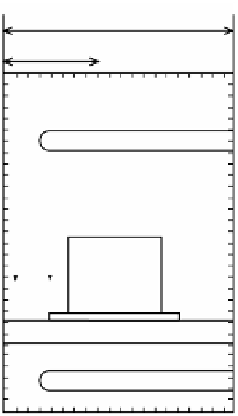Environmental Engineering Reference
In-Depth Information
1
0.39
FIGURE 5.76
Distribution of wind rate generated by fan.
Inside width
of furnace
FIGURE 5.77
Region of “down blowing” in furnace.
g. Calculation of heating and cooling: calculation of heating and cooling
can be conducted by using φ
CH
of surface of coils and the heat con-
duction coefficient of inside coils. In this case, the calculation of
discrete differential equation of heat conduction can be done on a
personal computer. Details can be seen in the paper “The Method of
Numerical Calculation of Non-stable Heat Conduction” (The Iron and
Steel Institute of Japan).
5.4.4
M
ELTING
F
URNACE
5.4.4.1
Energy Savings and Exhaust Gas Regulation
It is required that the fuel used for aluminum-melting furnaces be cost-effective, and
often oil such as heavy oil Type A is used. Aluminum-melting furnaces are batch-
operated, and the temperature inside the furnace is raised from 700˚C to approxi-
mately 1150˚C, when the melting of aluminum starts. As a means of recovering






































































































































































Search WWH ::

Custom Search